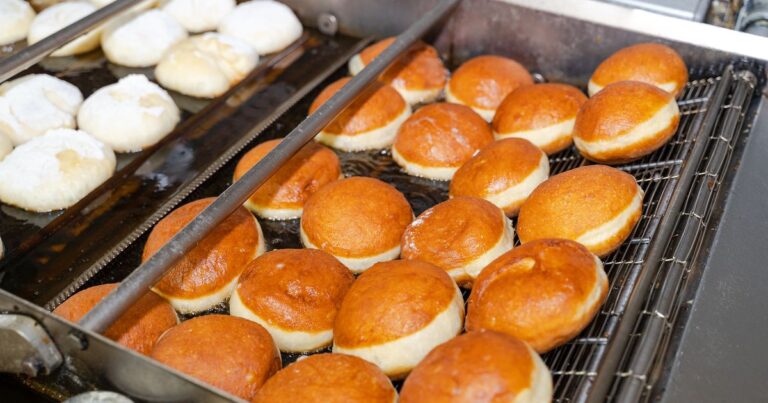New Website Foody Promises to Help Cooks Get Paid for Their Recipes
Foody is a new recipe website launching today, November 12, with a declared mission to help content creators monetize recipes. It has the sheen of Silicon Valley: the founders are a smart young couple who managed to raise $1.5 million, largely thanks to celebrity lead investor Serena Williams, and at launch, the site features star chefs, including the legendary Jeremiah Tower. But although the site’s mission sounds simple, the demand for free recipes is a notoriously contentious issue on the internet, one that already caused one Twitter storm earlier this year. So it will be fascinating to see whether Foody can deliver — what kind of creators might be attracted to this platform and whether readers are actually willing to pay for recipes.
Brenna and Daniel Stitzel are wife-and-husband founders, coming from investment banking and real estate development, respectively. They’ve raised $1.5 million in pre-seed funding, and their celebrity lead investor is Grand Slam tennis champion Serena Williams of Serena Ventures, as well as their friend Jack Conte of artist platform Patreon, and Vivek Patel formerly of delivery app Postmates, among others. “Food and cooking are such big parts of my life, both for my profession and with my family,” Williams said in a statement. “I’m so excited to try new recipes on Foody, and I believe it’s time culinary creators from every culture and background have an opportunity to turn their creativity into income.”
:no_upscale()/cdn.vox-cdn.com/uploads/chorus_asset/file/23008202/unnamed.jpg)
Foody
At launch, the site is also featuring star chefs. Some you might expect, such as Brandon Jew of Michelin-starred Mister Jiu’s, Evan and Sarah Rich of Rich Table, Shelley Lindgren of A16, Laura and Sayat Ozyilmaz formerly of Noosh, and top chef alum Tu David Fu. There are also home cooking personalities, including Amanda Haas, who once ran the Williams-Sonoma test kitchen. The wild card is chef Jeremiah Tower, formerly of Chez Panisse and Stars, who seems to have stepped out of semi-retirement to shop some recipes on the web. He’s sharing the classic bloody mary from Stars — a version of the cocktail that doesn’t “have a whole dinner shoved in,” the Stitzels promise — and a creme anglaise with a backstory about how his grandfather escaped the sinking of the Titanic with a menu from the dining room tucked into his dinner jacket.
The founders are billing Foody as “a recipe content marketplace for food lovers and culinary creators.” They say a chef, cookbook author, social media personality, or anyone can upload a recipe to the site, and customize it by adding an intro, photos, or videos. Many recipes start at 99 cents, although they can be priced any way the writer wants and can be bundled into “Collections,” kind of like a digital cookbook. Creators retain the full copyright to their work and are free to publish it elsewhere. Notably, Foody is not editing or testing these recipes, just providing the platform, so this is purely user-generated content. (We’ll soon find out if these chefs can write down recipes that will reliably translate for home cooks.)
It could be an appealing option for recipe writers. Right now, if a creator has an original recipe, he or she can try to pitch to a publication or brand for a flat rate, put it on his or her own website or blog and try to sell ads against it, throw it on Instagram or TikTok and maybe snag a sponsor, or film a video and put it on YouTube, which is actually one of the very few social media platforms to put pennies in pockets. But those options tend to demand thousands or millions in followers or page views for diminishing returns. That makes Foody an intriguing option as an alternative platform, one that makes it easier for creatives to market their work. You don’t have to set up an entire website or hire a cookbook designer. You could just upload a set of recipes.
And it might attract a certain reader. The founders anticipate readers will first discover the site because they’re already fans and followers of one of the star chefs or personalities. For example, the Stitzels say in their research and interviews with creators, Evan Rich shared that often at his restaurant diners will ask for recipes; now he has somewhere to send them, potentially with a QR code popped into the menu. The hope is that once readers start browsing the site, they’ll discover other content. “Home chefs are increasingly looking to creators for inspiration, and looking to creators they trust for recipes,” Brenna says. “When you think about cooking a recipe, it’s actually a pretty big commitment, in terms of buying the ingredients and the time and if it doesn’t work, you have to figure something else out.”
This is certainly not the first website to aggregate recipes. Earlier this year, another new website called Recipeasly tried to “fix recipes” by stripping out all of the “ads and life stories,” before a Twitter storm of recipe bloggers accused them of stealing content and taking revenue away; the platform was promptly taken down and remains down. The Stitzels say they were already working on Foody at the time, and they watched that whole debacle unfold “with great sadness.” In contrast, they don’t want to interfere with existing monetization, but rather empower creators to set their own personal paywalls.
“The main difference is that creators can get paid on the Foody platform,” Dan says. “Basically since the dawn of the internet, the prevailing assumption has been that recipes are free. But the reality for creators is that recipes cost a lot of time and money to make, and the opportunities to monetize those have not been amazing … but we’re in this era of the creator, and fans are willing to pay creators directly for their content.”






